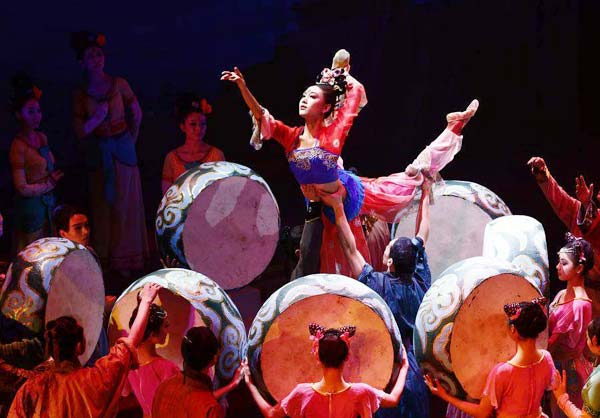Route for Cultural Transmission
Although the Silk Road was established for the silk trade, it had significance beyond business that brought benefits to peoples in both the East and West. It, for example, introduced Chinese science and technology, such as astronomy, medicine, architecture, iron-working, silkworm breeding and mulberry cultivation to the West. Chinese culture, in the form of music and art, also traveled along the road, and significantly influenced that in Central and West Asia. The Mongol conquests brought Chinese painting to Central and West Asia, as evident in the Chinese painting styles apparent in Persian, Arabic and Turkish miniatures.
Papermaking, printing, the compass and gunpowder – the four great inventions of ancient China – enhanced the world’s cultural development upon entry into Western countries. Papermaking and printing dramatically reduced the cost of books, making education accessible to the common people. The compass, brought to Europe in the 12th century, was of immense use in navigation and hence the voyages of Columbus and Magellan.
Chinese people, in turn, had the chance to explore foreign cultures. Buddhism, conjuring and sculpture went eastward along the road. Musical instruments, as well as music and dance, from Central Asia influenced traditional Chinese music. Persian musical instruments like the konghou and pipa have long been mainstays of the Chinese folk orchestra.
China, moreover, adopted the Islamic calendar and medical practices. In 961, the Song court invited Ma Yize, an astronomer from the Asia Minor Peninsula, to China to take up the post of chief official at the astronomical observatory, and to compile an official calendar. The astronomical observatory was still in use in the following Yuan Dynasty.
Religion is another important aspect of the foreign culture that spread to China. Buddhism entered the Central Plains area around the 3rd century after the Silk Road had been established. The influence of Buddhism in China cannot be overstated, its having been absorbed into the main Chinese belief systems of Confucianism and Taoism. Buddhism is one of three major religions in China.
Zoroastrianism, Manichaeism, Judaism and Christianity were also introduced into China but did not spread so widely. Islam is the only other religion to have gained a substantial presence.
Prophet Muhammad founded Islam in 622. Muslims who arrived in the Central Plains area in the 8th century are the ancestors of today’s Hui ethnic group whose present population is more than 10 million.
 |
|
Chinese classic dance drama Silk Road. [Xinhua]
|
Passage for Ethnic Migrations
In certain villages in Yongchang County, Gansu province you may come across a group of inhabitants that stands out from other locals. They have deep-set green eyes, defined noses, fair hair and olive skin. Their villages are also in the so-called fish-scale formation habitually used by Roman troops in ancient times. Historical records show that some captured troops from the Western Regions settled in Gansu province.
Are these Western-looking villagers the descendants of Roman centurions? In 2007, DNA tests that the School of Life Sciences, Lanzhou University carried out confirmed that all 91 of villagers’ blood samples prove that they are indeed of Central and West Asian origin. Their ancestors, therefore, were soldiers that had been recruited in Afghanistan and joined Rome’s eastward expansion.
Ancient Romans were not the only group that migrated via the Silk Road, however. During the Tang Dynasty, large numbers of Arabs and Persians migrated and settled in China. Trade zones were set up in Chang’an especially for these foreign merchants, who conducted such businesses as jewelry stores and pharmacies.
We Recommend:
